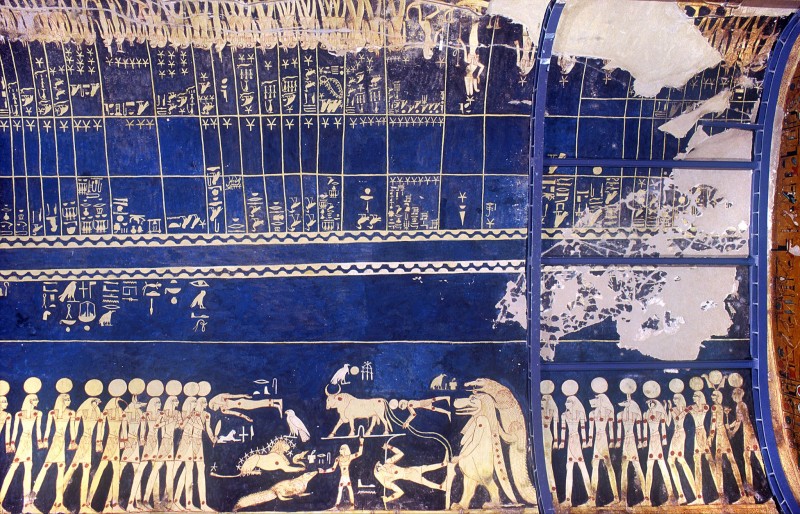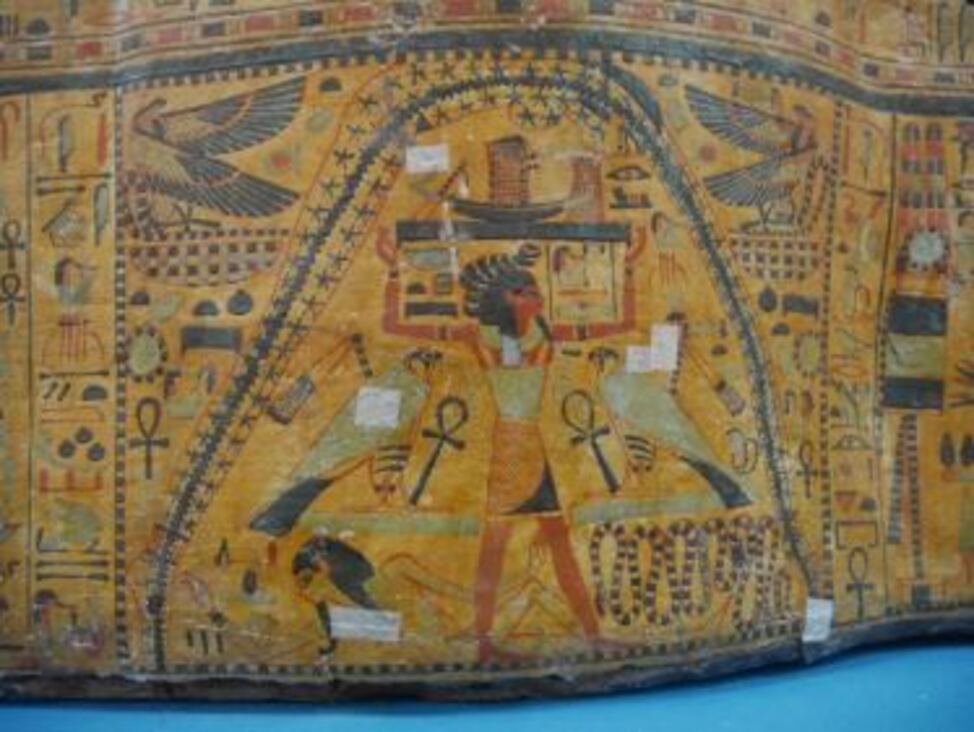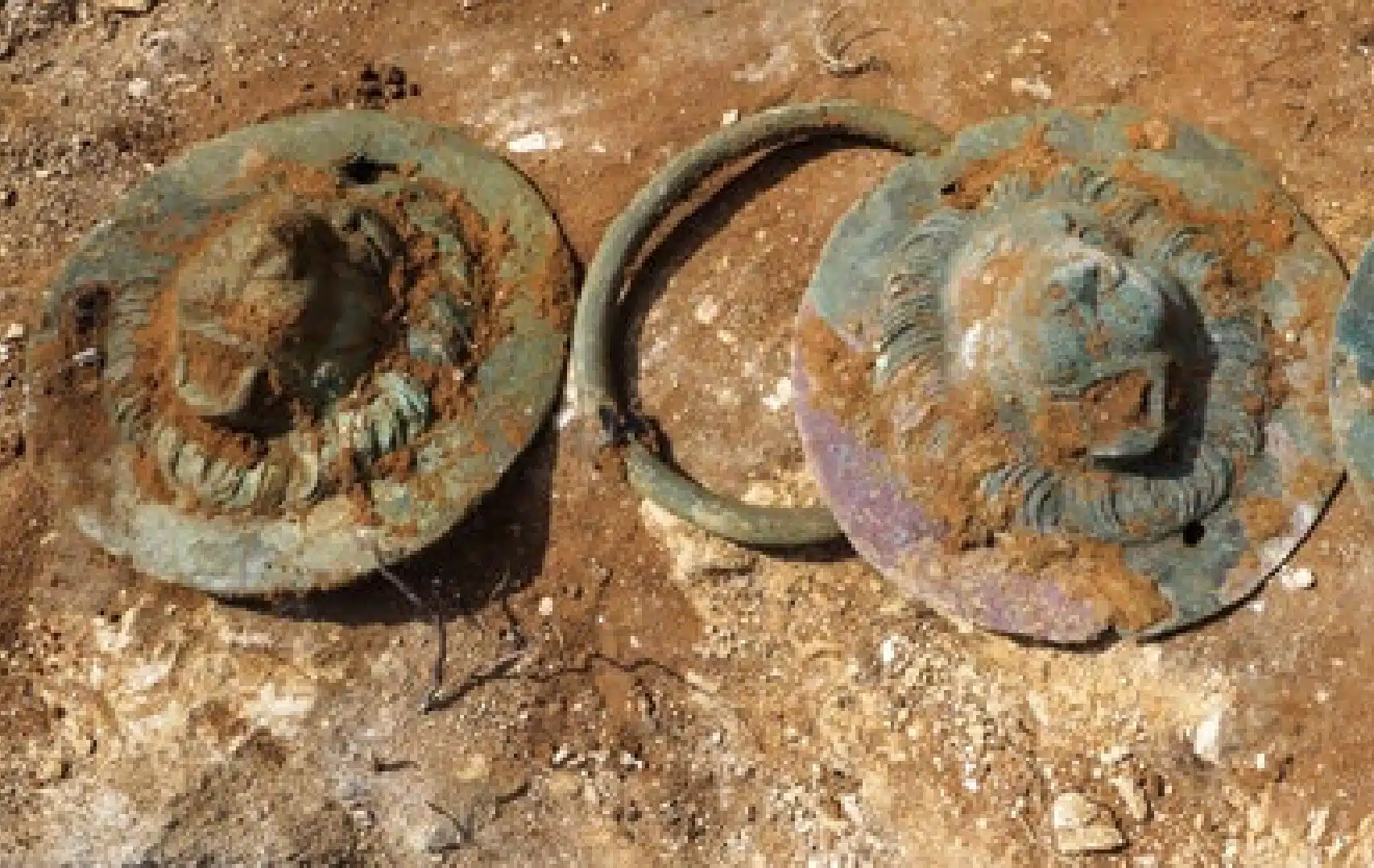Did the Ancient Egyptians depict the Milky Way in their coffin art over 3,000 years ago?
A new study led by astrophysicist Dr. Or Graur suggests that the Milky Way in Ancient Egypt may have been visually represented in cosmological vignettes from the 21st and 22nd Dynasties. This groundbreaking discovery, published in the Journal of Astronomical History and Heritage, uncovers a unique wavy black line across the body of the sky goddess Nut—possibly the first visual evidence of the Milky Way ever recorded in human history.
A Celestial Mystery on a Coffin Panel
Astrophysicist Dr. Or Graur from the University of Portsmouth’s Institute of Cosmology and Gravitation analyzed a wide range of coffin panels dating from Egypt’s 21st and 22nd Dynasties. His focus was on celestial vignettes featuring the sky goddess Nut, a deity often associated with the heavens and rebirth.
One particularly striking feature was identified on the outer coffin of Nesitaudjatakhet: a thick, undulating black curve bisecting Nut’s star-covered body. Dr. Graur argues that this feature closely resembles the Great Rift—the dark band of interstellar dust that visibly divides the Milky Way in the night sky.
“The distinctive wavy line may indicate the visual recognition of the Milky Way’s structure,” says Dr. Graur.
“It challenges the long-standing belief that Nut’s connection to the Milky Way was purely symbolic or textual.”
Cross-Cultural Cosmic Parallels
Dr. Graur further strengthens his case by comparing this curved element to similar motifs in the cosmological art of Navajo, Hopi, and Zuni cultures—each depicting the Milky Way as a dark or winding path through the sky. Similar patterns appear in the astronomical ceilings of Seti I’s tomb and other royal burials, reinforcing the argument for intentional visual representation.
This new perspective also reopens the debate around the ancient Egyptian term “Winding Waterway”, long suspected to be a metaphor for the Milky Way.

Rare but Significant Depictions
Out of 118 celestial coffin scenes analyzed, only one shows this distinct wavy curve—suggesting that while ancient Egyptians associated Nut with the Milky Way, they did not consider it her sole identity. Instead, she may have embodied a broader collection of celestial phenomena, from stars to the sun and beyond.
Surprisingly, only about 25% of these depictions show Nut with stars across her body, prompting Dr. Graur to suggest a possible preference for daytime skies during the 21st and 22nd Dynasties. Further research on papyrus scrolls and full-body Nut portraits may clarify whether this trend persisted across Egyptian history.
Evolution of Cosmic Imagery
Dr. Graur’s study also maps the visual evolution of Nut from the New Kingdom through the Roman Period, noting a shift from monumental wall depictions to symbolic coffin art. He argues that over time, Nut’s imagery became more integrated with the coffin itself—representing not only the cosmos but also a portal to the afterlife.
Preserving Cultural Heritage
In a sobering reminder of the fragility of ancient knowledge, Dr. Graur highlights the importance of digitized museum archives, citing the devastating 2018 fire at Brazil’s Museu Nacional as a powerful call for global preservation efforts.
Graur, O. (2025). The ancient Egyptian cosmological vignette: First visual evidence of the Milky Way and trends in coffin depictions of the sky goddess Nut. Journal of Astronomical History and Heritage, 28(1), 97–124. https://doi.org/10.3724/SP.J.140-2807.2025.01.06
Cover Image Credit: Dr. Or Graur





